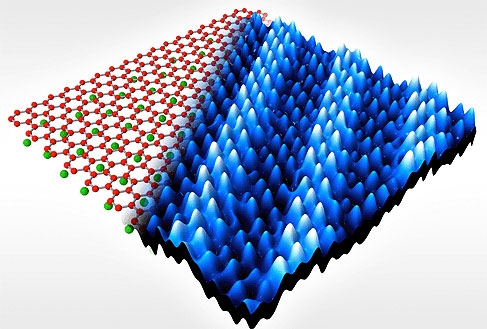
New research has shown that sealing molecules between two atomically thin sheets of graphene creates extreme pressure upon the molecules to modify their state, converting them to new crystals.
The Manchester University research group, led by Prof Rahul Nair, has published its findings in Nature Communications. The results demonstrate new methods of creating versatile 2D materials that have unique properties and numerous applications.
The graphene nano-press is made possible due to the material’s strength, which is greater than diamond. This allows extreme amounts of pressure to be exerted on trapped molecules without breaking the graphene layers. The two-stacked layers also create a self-sealing envelope around the trapped molecules to contain them.
In a statement, Prof Nair said: “Due to this extreme high pressure and large confinement of trapped molecules, these graphene enclosures effectively act as a nano-scale pressure cooker which works at room temperature.”
Graphene, first isolated and studied at the University in 2004, demonstrated that two-dimensional materials have extraordinary properties that could change how items such as electronics, composites, batteries are manufactured.
Since then, a family of 2D crystals have since been discovered, increasing scientists’ knowledge and understanding of atomically-thin materials beyond graphene. These new nano-crystals expand the toolkit with which researchers can work to create future devices and applications.
2D crystals of copper oxide, magnesium oxide and calcium oxide were produced using this new approach at room temperature, which was previously thought to be impossible. Conversion of salt solutions such as copper sulphate, or magnesium chloride usually requires exposure to intense heat and pressure to create these reactions. This new method incurs the same results at room temperature via the pressure created in a 1nm enclosure between two graphene layers.
Current research within the 2D materials field focuses on fabricating heterostructures made by layering different atomically thin materials and studying various heterostructure devices, such as nano-sized LEDs. This new research also allows scientists to understand the effect of trapped molecules within new heterostructure devices, which could help or disrupt their work.





Red Bull makes hydrogen fuel cell play with AVL
Formula 1 is an anachronistic anomaly where its only cutting edge is in engine development. The rules prohibit any real innovation and there would be...